All in on Koreatown: best restaurants, essential nightlife and groundbreaking chefs

- Share via
When chef Ki Kim orders a bowl of seolleongtang at JunTong SulLungTang in Koreatown, he settles at a scruffy wooden table for a very specific feeling. The soup’s cloudy beef broth obscures noodles and kerchiefs of meat waiting just below the surface, with salt and green onions and gochugaru close by for seasoning .
“The interior, the exterior, the menu and the people working there remind me of Korea in the 1990s,” he says. “It’s very nostalgic for me.”
For nearly two years, Kim was the chef and co-owner of Kinn in Koreatown, a 20-seat tasting menu restaurant that took Korean food in the opposite direction of nostalgia. He deconstructed Seoul street foods like clams steamed in soju, reimagining the dish paired with asparagus and hidden under an edible wafer imprinted with images of herbs and other bivalves. He’d often open meals with a salad slathered in peppery, garlicky paste, and then covered in shaved Manchego, with the words “Eat Your Kimchi!” spelled on the plate in seaweed dressing.
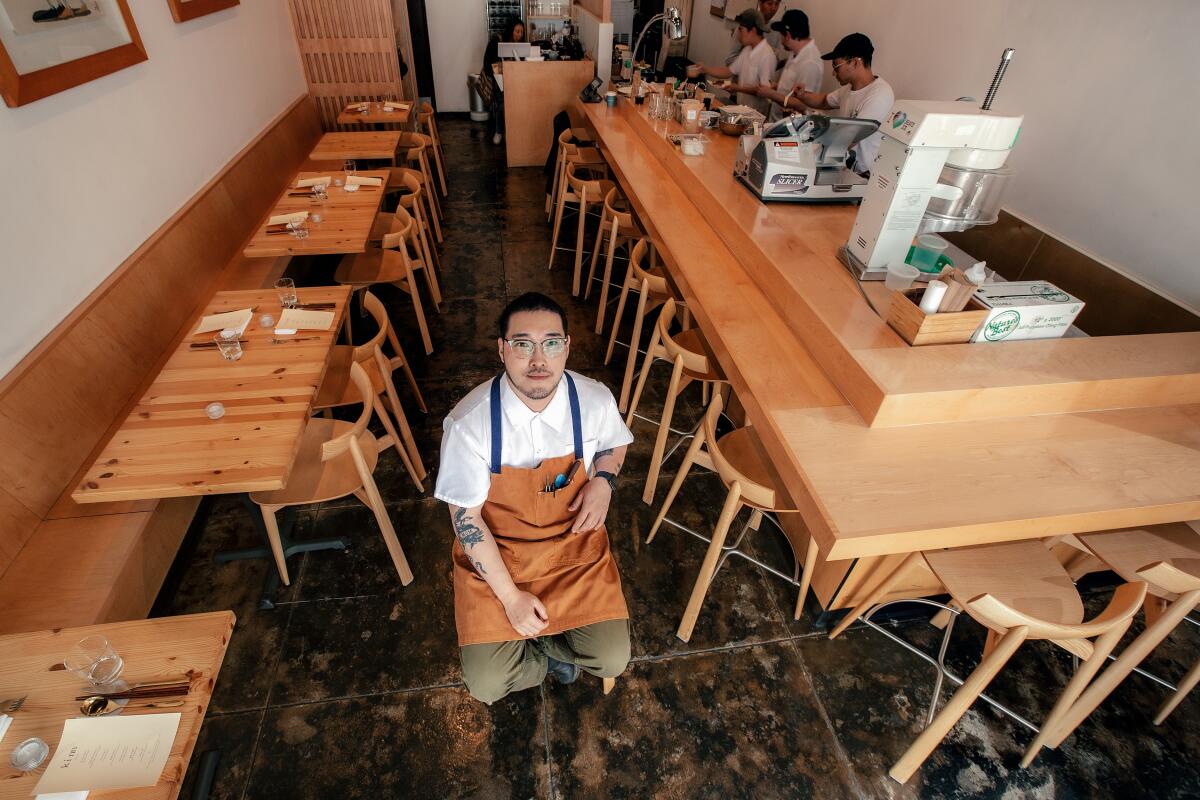
Kinn’s signature, a dish of crisped octopus over a complexly spicy gochujang-inspired aioli that took hours each day for Kim and his crew to make, was an interpretation of a specialty he learned working at Jungsik in Manhattan. Jungsik Yim helped create the current wave of New York’s top-class modern Korean restaurants when he opened in Tribeca in 2012.
All in on Koreatown
Notions of tradition and modernism in Korean cuisine have been on my mind for months. This week the Food team rolled out a project we’ve been brainstorming since last year; our guiding idea was “Koreatown is a state of mind.” I wrote a story about visiting New York last fall to experience some of its modern Korean fine dining restaurants — caviar and kimchi, truffles amid reimagined tabletop barbecue — and about considering the genre in concert with the singular Korean food culture in Los Angeles.
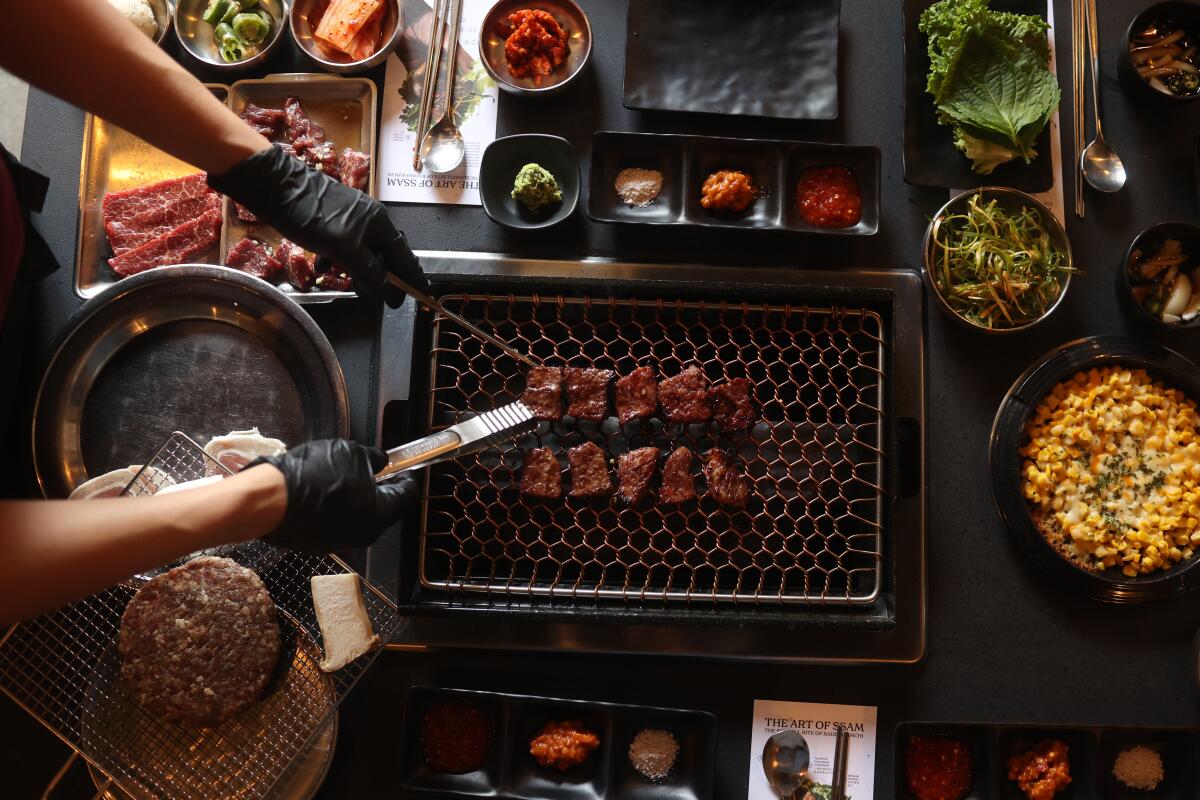
During my research I reached out to Kim, given that he’s the rare chef who’s cooked at one of New York’s foremost Korean restaurants and also helped propel modern thinking forward at Kinn.
We discussed how the wealth in New York, with its built-in fine-dining clientele, fueled the generation of Korean chefs who watched Yim succeed and saw the possibilities for their own ambitions to flourish.
“The chefs I’ve talked to [including Junghyun Park of Atomix, one of Manhattan’s most decorated restaurants] perceived Junsik, who’s a generation older, as having achieved the American dream. You’re truly following your passion and you’re still making sense financially. This is another level of cuisine, and it can be received very well in New York.”
On the differences between Korean dining cultures in Los Angeles and New York, he cites L.A.’s Korean population, the largest in the United States and a community that has existed for over a century.
“We have generations whose parents and grandparents immigrated to L.A. and they’re used to this culture. One thing I see when I go to Korea is how hyper trend sensitive the cuisine is. When people open a Korean restaurant in L.A. and that business continues for decades, it becomes a time machine. It’s mesmerizing to me and I love it so much. In Seoul I cannot find restaurants that I used to go with my family when I was a kid when I go back to Korea, versus when I go out with my parents out here to places like JunTong SulLungTang.”
You’re reading Tasting Notes
Our L.A. Times restaurant experts share insights and off-the-cuff takes on where they’re eating right now.
You may occasionally receive promotional content from the Los Angeles Times.
Which certainly doesn’t mean that L.A. Korean food, in its astounding breadth, operates entirely outside temporal existence. “Koreaworld,” a forthcoming cookbook and cultural examination by Deuki Hong and Matt Rodbard, focuses squarely on modern Korean cuisine’s national moment. It builds on the pair’s first collaboration, “Koreatown: A Cookbook,” which explored established communities across the country.
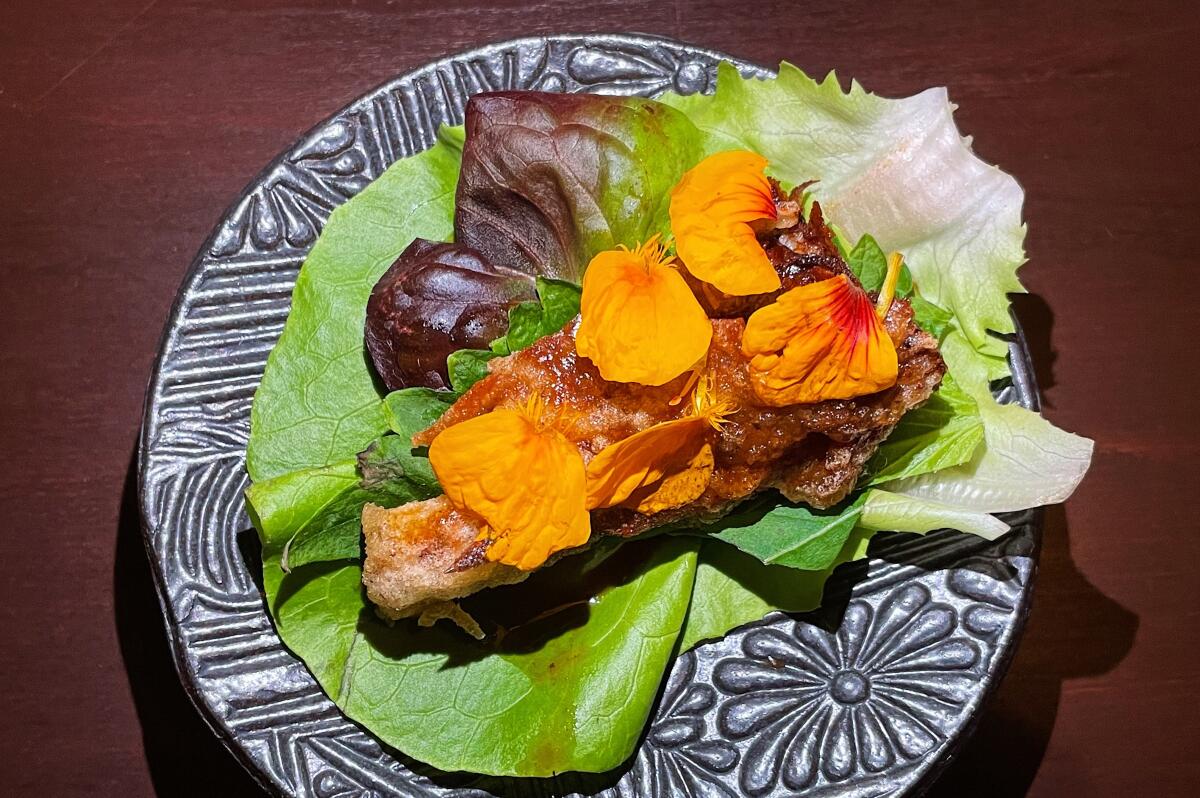
In “Koreaworld” — beyond the brilliant resurrection of Baroo in the Arts District, experimental finer-dining pop-up Joseon in Silver Lake, and Jihee Kim’s banchan gem Perilla L.A., which all opened after the book went to print — Los Angeles receives lots of attention. Among many, Hong and Rodbard highlight Yangban, Katianna and John Hong’s wonderful and ever-evolving culinary exploration of identity; Bodega Park, the coffee and sandwich shop in Silver Lake where you can order espresso with misugaru (a comforting Korean roasted grain powder beverage) and share a bodega-style chopped cheese alongside a pork bulgogi roll; and Seoul Sausage, a delivery service and Echo Park-based takeout window run by brothers Ted Kim and Yong Kim, who assemble beautiful lunchtime dosiraks.
The geographic diversity of these businesses returns me to a conversation with Hooni Kim, a chef who went to college in California and went on to open three restaurants in New York: Danji, a pioneering Korean fine dining restaurant that is currently closed after an electrical fire last year; Hanjan, a restaurant riffing on Korean tavern culture that didn’t make it through the pandemic; and eight-seat Meju, an extraordinary tasting menu project where I had my favorite meals among my recent travels to New York.
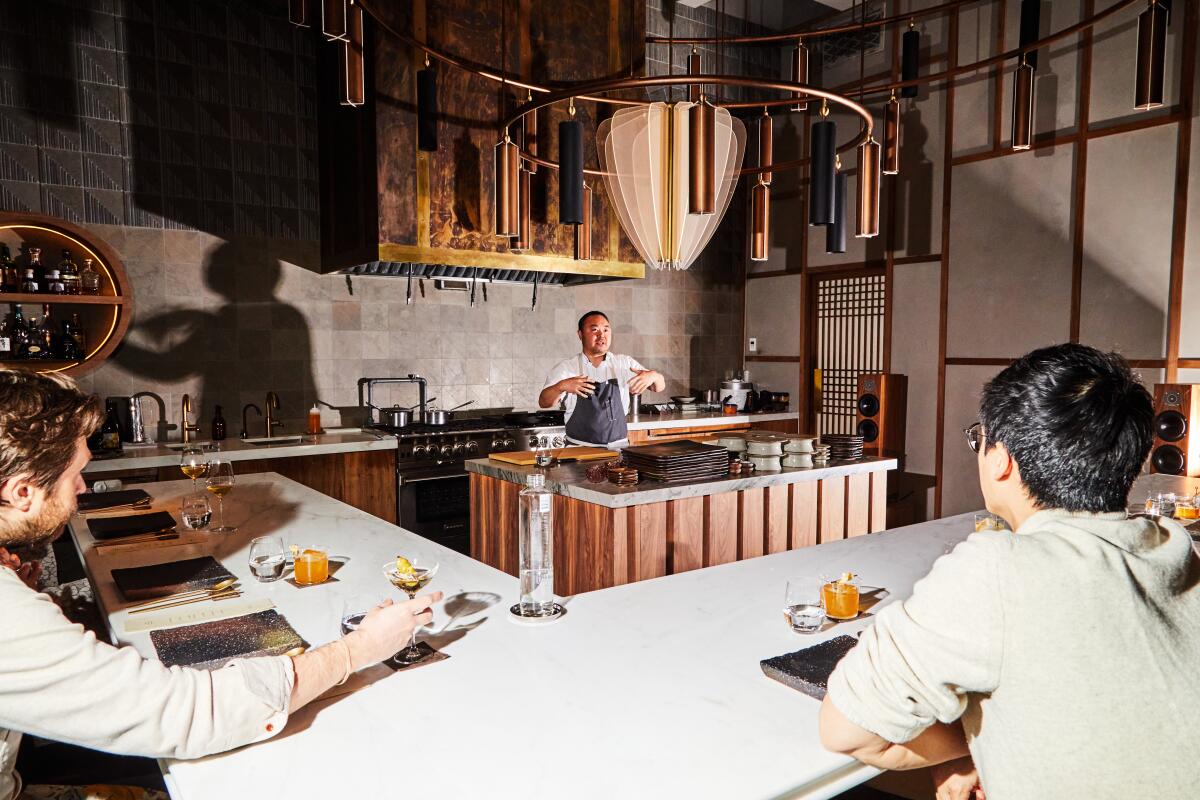
Meju is innovative in presentation but classical in its concentration on fermented ingredients core to Korean cooking. Its gleaming kitchen and counter reside in the back of Kim’s Little Banchan Shop on Long Island City in Queens.
The location is no coincidence for Kim, and it speaks to his broader theory about explorations of Korean cuisine. “Because so many people have come to love Koreatown restaurants, and K-town food, it has given chefs, including me, the courage to cook food in a neighborhood that isn’t a Korean neighborhood,” he says. “That opportunity allows us to reveal more about ourselves. In chefs’ hands, I think, is how a cuisine grows.”
I love that Los Angeles is expansive enough to support the old and the new; that decades-old businesess can maintain their customer base; that Seoul-imported trends can show up here on the fly; and that chefs like Ki Kim, whom I’m hoping reappears with his own place given his broad perspectives, can express their evolving personal narratives in fresh ways. There remains plenty of room for possibility.
Our favorite Korean barbecue, fried chicken and more
If you are here for the guides, we have them. First up: The Food team fanned out across the city to name 25 places we recommend for Korean barbecue: stalwarts and upstarts, traditionalists and rule-breakers.
Jenn Harris revisits one of her favorite subjects: Korean fried chicken. She pinpoints the seven best places for glazed wings, boneless thighs showered with pineapple, blueberries, raspberries, sliced tomato, avocado, red bell pepper, red onion and jalapeño(!) and whole birds scattered with fried garlic.
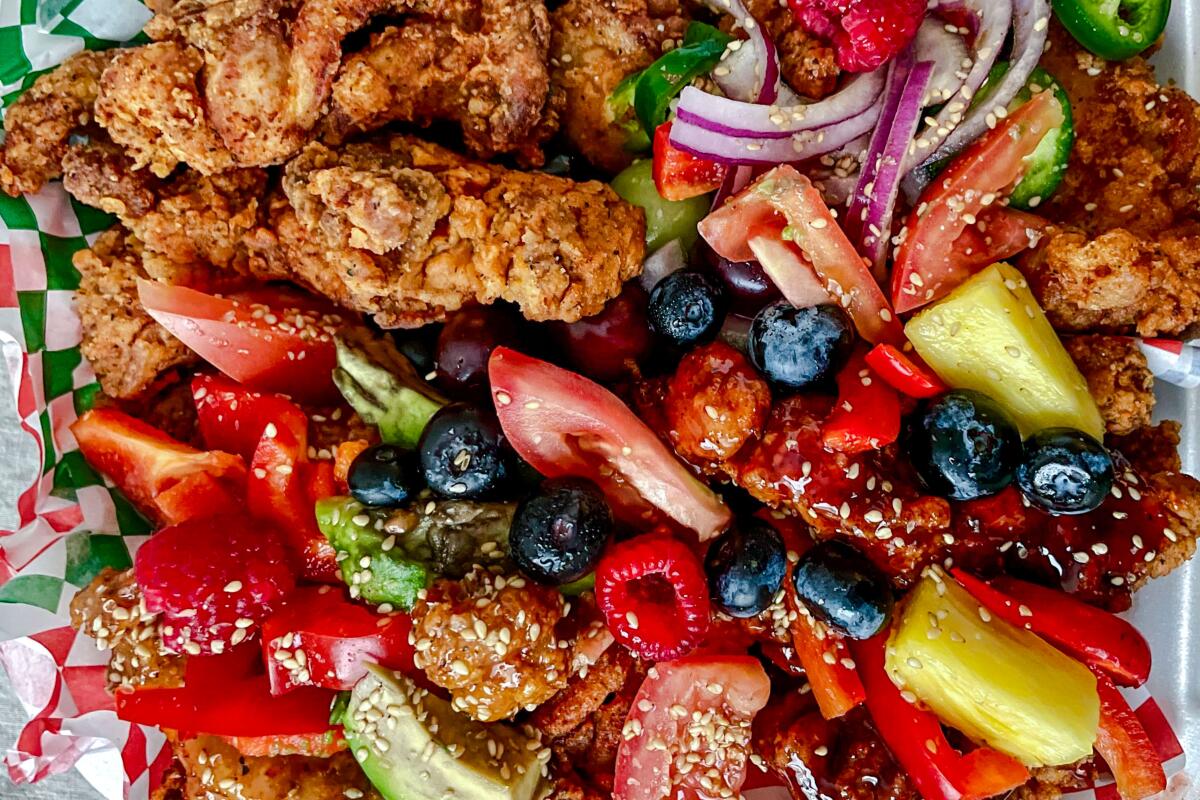
Stephanie Breijo, Danielle Dorsey and Daniel Hernandez stayed up late to explore Koreatown’s singular nightlife scene. They report on hidden karaoke bars, great smashburgers, classic cocktail lounges, neon-lit pubs and haunts of long-gone L.A. poets.
And from Buena Park, Sarah Mosqueda dives into the Source OC, an entertainment and dining destination that’s become the center of Orange County’s emergent Koreatown. It’s all there: classic tabletop barbecue, fried chicken, battered Korean-style hot dogs, red bean-filled doughnuts and a late-night lounge for gamers.
Great Australian Bite
On to another subject: In last week’s newsletter, Laurie Ochoa mentioned an upcoming dinner featuring Australian chef Josh Niland. He’s known for “The Whole Fish Cookbook,” which was book of the year winner at the 2020 James Beard Awards, and runs Sydney’s Saint Peter restaurant and fish butchery, where he applies a nose-to-tail approach to fish and seafood. Those of us in Southern California will have a chance to experience Niland’s cooking April 10 on the Malibu Pier when he joins Melbourne chef Jo Barrett, who is the Age Good Food Guide’s 2024 chef of the year and known for her no-waste kitchen practices, along with L.A. chef (via Australia) Monty Koludrovic of Hollywood’s the Living Room. It’s an L.A. Times and Tourism Australia collaboration. Tickets are available here.
Have a question?
Also ...
- Stephanie reports on the opening of Persian restaurant Azizam in Silver Lake. Cody Ma and Misha Sesar began as a pop-up, which I deeply admired, and I’m excited they’ve settled into a space.
- Jenn attended the 40th annual International Pizza Expo in Las Vegas, and she met up with one of L.A.’s best pizza chefs as he strides toward perfecting focaccia.
- At De Los, Andrea Aliseda dives into the contemporary use of maíz and masa harina in the hands of modern bakers and pastry chefs.
- Daniel Miller reports on how, with California’s minimum wage increasing on April 1, South L.A. residents are bracing for bigger bills at fast-food restaurants.
Eat your way across L.A.
Like what you're reading? Sign up to get it in your inbox every week.
You may occasionally receive promotional content from the Los Angeles Times.
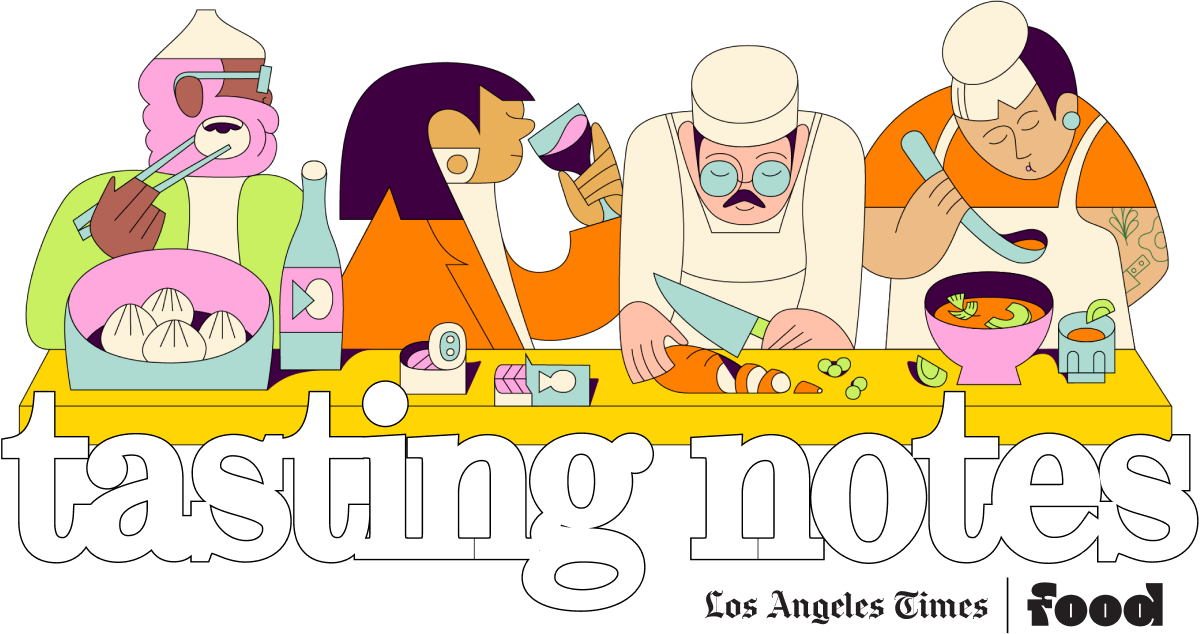
Eat your way across L.A.
Get our weekly Tasting Notes newsletter for reviews, news and more.
You may occasionally receive promotional content from the Los Angeles Times.



